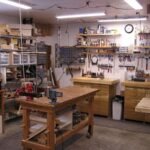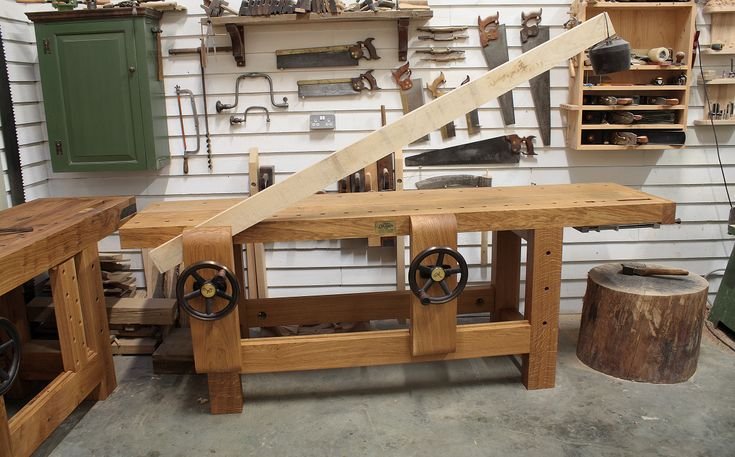A Cozy Chat About Woodworking Plans in Fusion 360
You know, there’s something special about the sound of a saw cutting through wood—it’s like music to my ears. I’ve spent countless weekends down in my little garage, the scent of fresh pine mingling with the faint odor of sawdust, and I can’t help but feel like I’m in my own little world.
Last year, I decided to take a leap and dive into woodworking as more than just a hobby. I wanted to craft a beautiful coffee table for the living room. Now, I’m no master carpenter, but I thought, “How hard could it be?” I had my trusty set of tools: a DeWalt circular saw, some old chisels passed down from my grandfather, and a random assortment of sanding blocks. I half-joked to my wife that my “local hardware store” had become my second home.
So, I figured it was time I leveled up my game and started using Fusion 360 to make build plans. Yeah, I know, it’s not your grandfather’s blueprint pencil and paper anymore. I’d heard good things about CAD software, but let me tell you, the learning curve can be a little… steep for us old-timers.
The First Dive
One day, I popped open Fusion 360, armed with a cup of strong black coffee. That stuff was essential; I needed every bit of caffeine to keep me focused. Right away, I felt outmatched by all the buttons and menus. I’d seen some slick YouTube videos of people designing fancy projects in mere minutes, and here I was, just trying to figure out how to draw a rectangle.
After spending a good hour just navigating around, I finally managed to create a basic box—no frills, just a simple rectangle. My heart raced a bit like I was back in high school, excited for prom. But here I was, creating something that could potentially be a beautiful coffee table.
Then came the moment I was really looking forward to: turning that rectangle into something with depth. I remember having to literally talk myself through it, “Okay, just extrude it,” I kept whispering in my almost-empty garage. But you’d think I was trying to solve a Rubik’s Cube blindfolded; it took me a few tries to get it right. I almost threw my computer out of the window when I accidentally deleted my first attempt.
Happy Accidents and Lessons Learned
As I started sketching out the various components—the legs, the tabletop, you name it—I realized that I had no real measurements in mind. I wanted the table to fit just right in the living room, and here I was, drawing away like I was planning a spaceship. I’d go back to my living room, measuring things a million times with my old tape measure, squinting at the numbers.
“Why didn’t I think of that sooner?” I laughed to myself, realizing I had a great excuse to pause and drink more coffee. It’s funny how sometimes clarity strikes when you least expect it.
So, I designed the legs to be chunky because, you know, I wanted something rustic. My heart was set on using red oak for its rich color—ah, the way that wood smells when you cut into it! I could almost taste it, just imagining that warmth in my living room.
But here’s where the honest mistake happened: I didn’t account for the thickness of the wood I was planning to use. I followed my plans to the letter, and once I started cutting, I realized the proportions looked all off. It was like I’d designed a table meant for a dollhouse! There I was, in my garage, staring down at my half-finished legs, wondering if I should just call it a day and stick to crafts that involve glue and popsicle sticks.
Turning It Around
But then I took a deep breath and thought, “This isn’t the end of the world.” With some adjustments in Fusion 360—who knew?—I went back and tweaked the design. Suddenly, the table started to look like an actual table instead of a toy. I guess there’s a lesson in resilience there because I could’ve easily walked away but chose to push through the frustration.
Fast forward a couple of weekends, and I was finally ready to assemble everything. I remember that moment distinctly. My wife came out to see my progress, and I felt a swell of pride. When I put those pieces together, creating that sturdy structure, it all felt worth it. I thought about all those moments of second-guessing, the minor setbacks, and the coffee pots emptied on that journey.
The Joy of Creation
When I finally stood back to admire my creation—a solid, beautiful coffee table— I couldn’t help but laugh. It actually worked! I even went ahead and finished it with a glossy polyurethane that caught the light just right, making that oak shine.
There’s a certain kind of warmth you feel when you create something with your own two hands, even if it takes quite a few missteps along the way. So, if you’re out there in your garage, staring at that computer screen, maybe a little paralyzed by the thought of software like Fusion 360, let me tell you, just go for it. Mess up, learn from it, and don’t be afraid to adjust your plans. You’ll be surprised at what you can accomplish. A little patience, a lot of coffee, and some good tunes—trust me, it’s worth it.
Next thing you know, you’ll have your own masterpiece. So cheers to woodworkers everywhere, no matter where you are on that journey!








